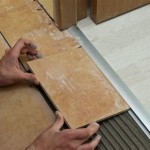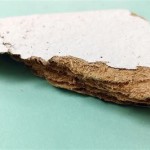Can You Tile Directly Onto Concrete Blocks? A Comprehensive Guide
Concrete blocks are a common building material for walls, both interior and exterior. Their durability and cost-effectiveness make them a popular choice. However, when it comes to finishing these walls, questions often arise regarding the suitability of directly tiling onto the block surface. This article explores the feasibility and best practices for tiling directly onto concrete blocks.
Understanding Concrete Blocks and Their Properties
Concrete blocks, also known as concrete masonry units (CMUs), are porous and can absorb moisture. This characteristic, while beneficial for certain applications, can present challenges when tiling. The porous nature of concrete blocks can affect the adhesion of tile adhesive and grout, potentially leading to failure over time. Additionally, concrete blocks can experience movement due to temperature fluctuations and settling, further complicating direct tiling.
Factors Affecting Direct Tiling
Several factors influence the success of directly tiling onto concrete blocks. These factors need careful consideration before commencing any tiling project.
Key Considerations Before Tiling
Before applying tiles directly to concrete blocks, several critical factors must be assessed:
1. Moisture Content
Excessive moisture within the concrete blocks can hinder adhesion and lead to long-term problems. The blocks must be thoroughly dry before tiling commences.
2. Block Surface
The surface of the concrete blocks should be clean, free of dust, debris, and efflorescence (salt deposits). Any irregularities or imperfections should be addressed before tiling.
3. Type of Tile
The type of tile chosen impacts the suitability of direct tiling. Porous tiles, like terracotta, may not be suitable for direct application due to potential moisture issues.
4. Environmental Conditions
The environment in which the tiles will be installed, whether interior or exterior, and the local climate, play a significant role in determining the appropriate tiling method.
5. Movement Potential
Concrete blocks are subject to movement. This movement, while often minimal, can cause cracking in the tile or grout if not properly addressed.
Preparing Concrete Blocks for Tiling
Proper surface preparation is crucial for successful direct tiling onto concrete blocks. The following steps outline the recommended preparation process:
1. Cleaning
Thoroughly clean the concrete block surface using a stiff brush to remove loose debris, dust, and efflorescence. A mild detergent solution can be used if necessary, followed by a thorough rinsing with clean water.
2. Priming
Applying a primer specifically designed for concrete blocks is essential. This primer helps seal the surface, reducing moisture absorption and improving the adhesion of the tile adhesive.
3. Leveling
If the concrete block surface is uneven, a leveling compound may be necessary to create a smooth and uniform substrate for the tiles.
Suitable Adhesives and Grouts
Selecting the correct adhesive and grout is critical for the longevity of the tiled surface. The following recommendations apply:
1. Adhesive
A high-quality, polymer-modified thin-set mortar specifically designed for concrete blocks should be used. This type of adhesive provides superior bonding strength and flexibility to accommodate minor movement.
2. Grout
A flexible grout is recommended for tiling onto concrete blocks. This type of grout resists cracking due to movement and provides a durable, water-resistant finish.
Alternatives to Direct Tiling
While direct tiling onto concrete blocks is possible, alternative methods offer enhanced performance and durability, especially in demanding environments:
1. Applying a Waterproof Membrane
Installing a waterproof membrane over the concrete blocks before tiling provides an additional layer of protection against moisture. This is particularly beneficial in wet areas like showers or bathrooms.
2. Installing a Cement Backer Board
Attaching a cement backer board to the concrete blocks creates a stable and consistent substrate for tiling. This method is highly recommended for areas subject to significant movement or moisture exposure.
Long-Term Maintenance
Regular maintenance helps ensure the longevity of the tiled surface. This includes regularly cleaning the tiles and grout and inspecting for any signs of cracking or damage.
Specific Considerations for Exterior Applications
Tiling onto exterior concrete block walls requires additional considerations due to exposure to the elements:
1. Freeze-Thaw Cycles
In climates with freeze-thaw cycles, using a frost-resistant tile adhesive and grout is essential to prevent damage caused by expanding and contracting ice.
2. UV Exposure
For exterior applications, choose tiles and grouts that are resistant to UV degradation to maintain their color and integrity over time.

Tile Over Blockwork Mike Haduck
:max_bytes(150000):strip_icc()/can-you-install-tile-directly-on-concrete-1822600-04-458f7bb6c78348c1835cf8054ef36553.jpg?strip=all)
How To Install Tile Over Concrete
:max_bytes(150000):strip_icc()/can-you-install-tile-directly-on-concrete-1822600-01-8a89ceab1a274fb8ac81890ab7fc6b1b.jpg?strip=all)
How To Install Tile Over Concrete

Can You Lay Outdoor Tiles Over Concrete Premier Porcelain

Can Tile Be Attached To Brick Hometalk
How To Tile Onto Concrete Floors Porcelain Super

Can You Lay Tiles Onto Damp Concrete Atlas Ceramics
Slate Over Cinder Blocks Ceramic Tile Advice Forums John Bridge
I Just Finished Plastering My Wall With Cement Though Did It Rough Plaster Can Start To Lay Tiles On The Few Days After Quora

How To Install Patio Pavers Over An Existing Concrete Slab
Related Posts








